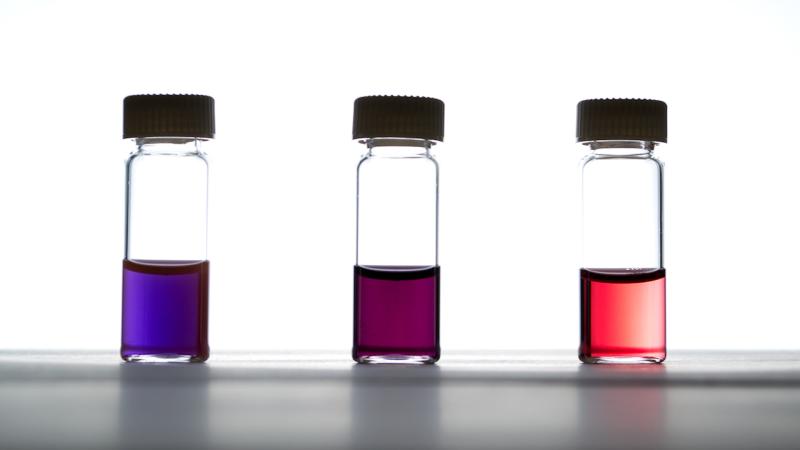
Gold nanoparticles dispersed in water [Image Credits: Nikonianman / CC BY-SA 4.0]
Can you imagine the colour of gold to be anything other than, well, gold? Puzzle not! In reality, gold nanoparticles in its colloidal form, also known as colloidal gold, can exhibit a wide range of colours. These colours are determined by the size and shape of gold nanoparticles, as small as the diameter of our hair, dispersed in water to form colloids. Well, there is no magic here. Matter exhibits different properties at different scales, and so it is no wonder that bulk gold and gold nanoparticles are poles apart in how they look.
Colloidal gold is not a modern-day discovery; it has gained much attention since aeons due to its vibrant colours. In the 4th century, Romans made use of this fascinating phenomenon to design the famous Lycurgus cup. This stunning piece of art showcases an awe-inspiring colour change—red when lit from outside and green when lit from inside. Yet another example is the beautifully decorated stained glass found in many European cathedrals.
Electrons seem to hold the key to this fascinating phenomenon as they impart the brilliant colours to colloidal gold. The gold nanoparticles have many electrons on their surface—more like an electron cloud engulfing the particle. When light falls on these particles, this electron cloud gets displaced due to the electric field of light. Since visible light is an electromagnetic radiation, it has oscillating electric and magnetic fields. Once the electron cloud is displaced, the positively charged core, the nuclei, pulls the cloud back. In this process, the pushing and pulling results in the oscillation of the electron cloud. For gold nanoparticles, when the frequency of oscillation matches the frequency of incident visible light, we see the beautiful colours emerge.
Gold is not the only material that displays this exciting phenomenon, although it is the most studied one. Other metals like silver and platinum also display magnificent colours in their colloidal forms. In recent years, scientists are looking for more such materials.
Apart from pleasing our eyes, these nanoparticles have a plethora of applications. They are widely used in therapeutics, including cancer therapy, where innovative breakthroughs are reported frequently. Owing to their versatility, optical properties, and safety in the human body, gold nanoparticles are used to image, diagnose, and treat various diseases. The field of nanoscience is fascinating, and as Feynman rightly said, there is plenty of room at the bottom to explore.





